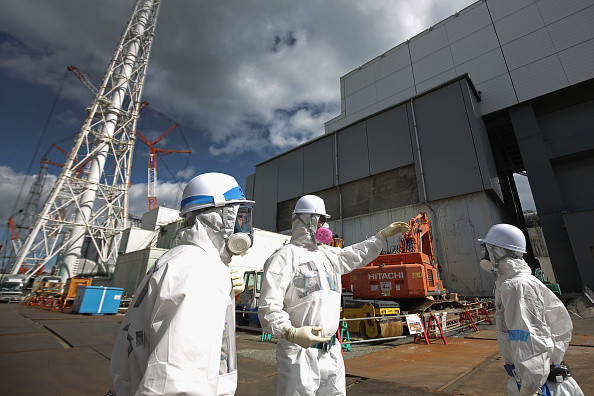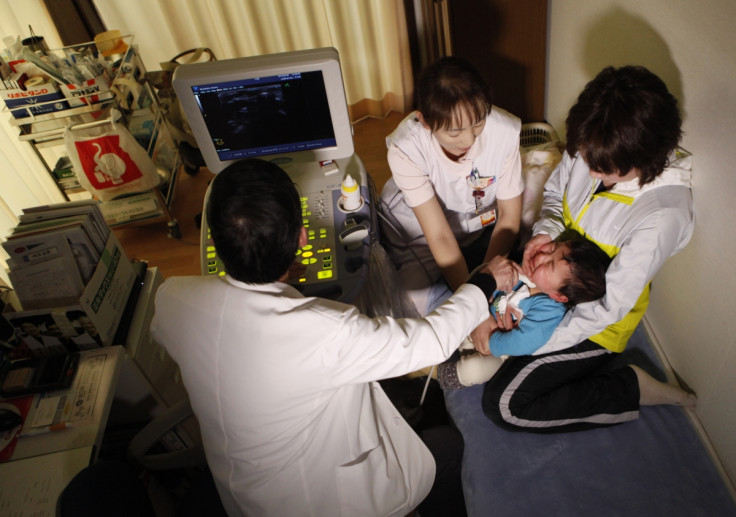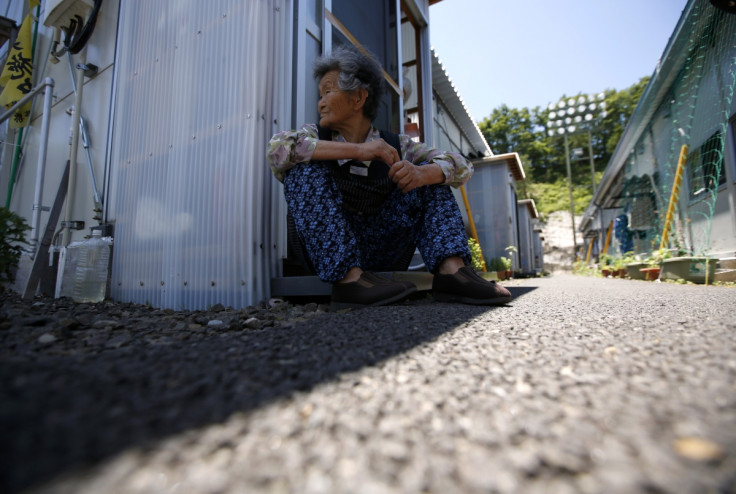Fukushima nuclear disaster health effects: Trauma, psychological distress and cancer threaten survivors

Five years on, Japan still battles with the long term effects of the Fukushima nuclear incident. On 11 March 2011, following a 9.0 magnitude earthquake, a large tsunami flooded the Fukushima Daiichi plant, disabling the power supply of 12 emergency generators, and the cooling function of three reactors.
Radioactive elements were released, posing an immediate health threat to hundreds of workers on the site, and to the more than 100,000 Japanese living in the area. Five years on, the trauma remains and Japanese society still faces unprecedented health challenges.
The workers of Fukushima
When the tsunami struck the plant and radioactive material began to escape, workers from Tepco, the utility service company managing the plant, were quick to react. By 20 March 2011, a dozen of them, less than 1% of the total Fukushima Daiichi workforce, was exposed to doses of radioactive iodine high enough to impact their safety.
What is acute radiation syndrome (ARS)?
Acute radiation syndrome is an acute disease caused by exposure of the whole body to radiation. Typically, a high dose penetrates the organs in very short period of time (usually a matter of minutes). It can manifests itself with symptoms such as loss of white blood cells, nausea, vomiting, headache, loss of hair, redness of the skin, depending on the exposure.
It can lead to different syndromes, including bone marrow syndrome, gastrointestinal syndrome or cardiovascular or central nervous system syndrome. In all cases the survival rate is very low, and the person usually dies from bone marrow failure, infection or increased pressure in the confining cranial vault as the result of increased fluid content caused by edema, vasculitis, and meningitis.
The radioactive doses were more than twenty times lower in Fukushima than in Chernobyl, where the worse affected workers were exposed to levels of radioactivity as high up as 6,000 mSv. 28 Chernobyl workers died less than a month after being exposed, from bone marrow failure, after developing an acute radiation syndrome (ARS).
No similar cases was reported in Fukushima, where the maximum level of exposure any workers faced was just above 250 mSv. Such radioactive levels may still expose them to a greater risk of cancer and thyroid disorders, according to a 2013 risk assessment published by the World Health Organization, one of the most comprehensive documents on the topic.
"Exposure to radiation was not enough to kill Fukushima workers, but the twelve who were most exposed to radioactive iodine will have their thyroid gland checked regularly for the rest of their lives, to make sure they do not develop a cancer or another thyroid disorder", Richard Wakeford, professor at the University of Manchester who contributed to the WHO report, told IBTimes UK.

Radioactive elements cesium and iodine are classified by the IARC as class 1 carcinogenic components. This is because above certain doses, in the case of nuclear bomb and Chernobyl survivors for instance, there is enough evidence to prove that radiation can cause different types of cancer, thyroid cancer and leukaemia in particular.
The problem is that this association is a lot less clear when people are exposed to low doses of radioactive material. "Above 100 mSv, the risk of cancer is generally considered to increase proportionally with the dose. But when a cancer is diagnosed, it is difficult to distinguish radiation from other risk factors", says Richard Wakeford.
Whether the workers who were exposed to less than 100 mSv will develop cancer is therefore unclear. But in October 2015, a worker who had been involved in the clean-up of the plant developed leukemia. He was awarded a compensation by the Japanese government, in a move seen by many as an official recognition that the disaster could lead to the disease.
Cancer risk for off-site population
On 12 March 2011, more than 100,000 people living in a 20km radius around the plant were evacuated , while those living up to 30km away were advised to stay indoors.
Most of the radioactive elements were blown out over the Pacific Ocean, but because of the wind's direction, a plume of material was carried to the north-west, causing significant contamination of environment out to around 40km from the plant. Learning from past experience in Chernobyl, restrictions were imposed on food and milk, which, if contaminated, can become a source of exposure.
Monitoring children, who are the most vulnerable to thyroid cancer, became a priority. The largest testing campaign to ever take place in Japan was carried in the Fukushima prefecture from October 2011. Doctors from Fukushima Medical University set about to test more than 368,000 children who were under 18 at the time of the disaster. Up to now, 300,476 have been screened, and a staggering 50% presented nodules or cysts on their thyroid. However, only 110 cases of cancer have been confirmed so far.
So what do these numbers tell scientists about the risk of cancer? A study published in Epidemiology has claimed that it reflects a clear increase in the number of thyroid cancer cases amongst children living the vicinity of the plant. Comparing it with data from other parts of Japan, lead author Toshihide Tsuda said it reflected a 30-fold increase over normal childhood cancer risk.
Yet, a majority of researchers have contradicted this conclusion, saying it is inappropriate to compare data from a large scale screening program to data from other places. They also say it is too early to link the anomalies to the disaster. In Chernobyl, it took more than four years to see the negative effects appear.

Rather, the problem seems to be that large scale testing has revealed thyroid gland anomalies that would have remained undetected and benign otherwise. "An interesting thing we have seen in Fukushima prefecture is that the intense monitoring of people has led to a dramatic increase in the detection rate of thyroid cancer. It does not mean that cancer has increased in the population but it could imply that we are detecting problems that could have remained dormant without ever posing any threat to the person", Wakeford explains.
"The risk of thyroid cancer can be increased by radiation exposure, but there is also lots of evidence that the more we screen for thyroid cancer the more of it we find – and that includes thyroid cancers that wouldn't ever have caused harm in someone's lifetime, this is called overdiagnosis", confirms Dr Jana Witt, health information officer at Cancer Research UK.
This can be a real problem. When cancerous lesions are suspected, the thyroid gland may be removed. In some cases, the probability that nodules would have developed in a serious disease is low, so removing the gland may actually have been unnecessary.
Five years after the disaster, all the radioactive iodine 131 which can cause thyroid cancer is gone, since it has a radioactive decay half-life of about eight days. The problem now comes from caesium 134 and caesium 137 which have a half-life of 2 and 30 years respectively. Unlike iodine which targets the thyroid gland, radioactive caesium affects the whole body, increasing the risk of leukaemia and of solid cancers. It will still remain in the ground around Fukushima prefecture for many years, posing a cancer risk that is difficult to quantify just yet.
The WHO report expects that for people in the most contaminated location: "For leukaemia, the lifetime risks are predicted to increase by up to around 7% over baseline cancer rates in males exposed as infants; for breast cancer, the estimated lifetime risks increase by up to around 6% over baseline rates in females exposed as infants; for all solid cancers, the estimated lifetime risks increase by up to around 4% over baseline rates in females exposed as infants; and for thyroid cancer, the estimated lifetime risk increases by up to around 70% over baseline rates in females exposed as infants."
Social and psychological impact
Beyond the risk of cancer, the disaster brought changes that are more subtle and difficult to appreciate, but might have more negative effects over time. In 2014, the UN said: "The most important and manifest effects of the nuclear accident on the short term would appear to be to be on mental and social well-being".
Separate research published in 2015 by the WHO and in The Lancet back up this claim. The WHO found that under normal condition, about 4% of Japan's population suffer from trauma and psychological distress. However, the proportion of people suffering from psychological trauma reached 14,6 % if they had been evacuated following the nuclear accident.

In the Lancet study, researchers showed that the evacuees were five times more likely to suffer from psychological distress than other Japanese citizens. The most common mental health problems reported were depression and post-traumatic stress disorder (PTSD). In Chernobyl, a similar phenomenon was observed, and even today, rates of depression and PTSD remain high within the survivor population.
Similar patterns are thus also expected in the long term for Fukushima survivors, especially since about 80,000 people remain evacuated to temporary shelter. It is also estimated that around a thousand people died as a result of the evacuation, often because they already suffered from chronic diseases, and were not able to access their treatments.
"Five years on, many people who want to return home are still forbidden by the authorities to do so. This has an important psychological impact, especially on older and more vulnerable groups who may never see their homes again. Evacuation always has important public health consequences, and in Japan, five years on, evacuees are still paying the price", concludes Richard Wakeford.
© Copyright IBTimes 2025. All rights reserved.






















